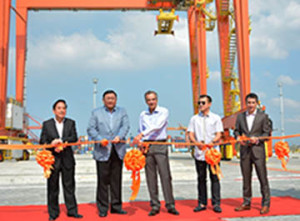
International Container Terminal Services, Inc. (ICTSI) inaugurated on November 26 Yard 7 of the Manila International Container Terminal (MICT) at the same time commissioned four new rubber-tired gantries. Yard 7 is part of MICT’s P5-billion expansion project and adds capacity to the terminal, now at 2.75 million twenty-equivalent units from 2.5 million TEUs. The expansion not only addresses current demand of shipping line clients and the port community for terminal services but also of anticipated growth.









